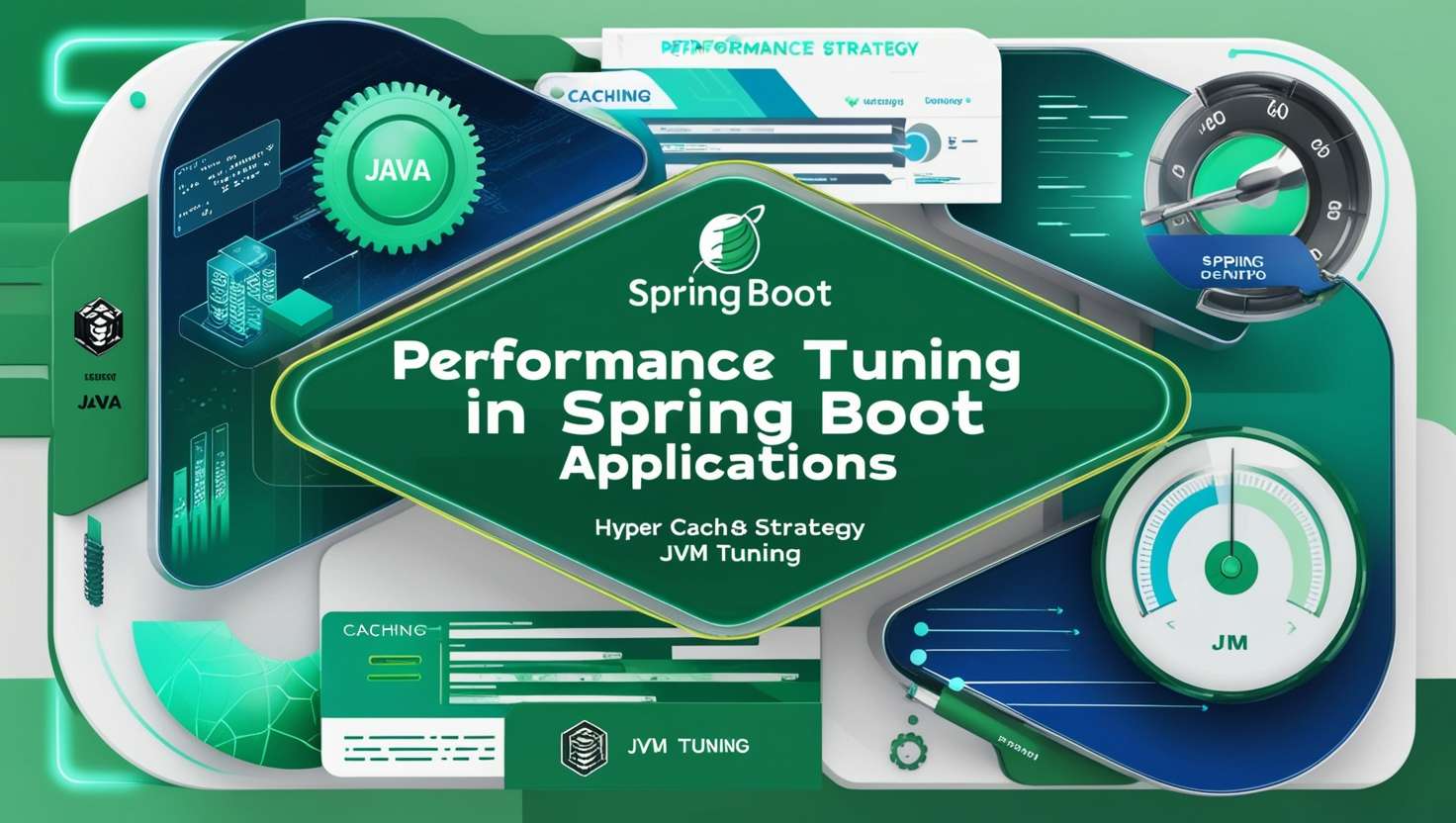Spring Boot has emerged as a leading framework for building Java applications, praised for its ease of use and rapid development capabilities. However, Performance Tuning Spring Boot Applications is often an overlooked but critical aspect that can dramatically enhance the efficiency and responsiveness of your applications. In this blog post, we will explore various techniques for optimizing the performance of Spring Boot applications, including JVM tuning, caching strategies, and profiling, complete with detailed examples.
Why Performance Tuning Matters
Before diving into specifics, let’s understand why performance tuning is essential. A well-optimized application can handle more requests per second, respond more quickly to user actions, and make better use of resources, leading to cost savings. Ignoring performance can lead to sluggish applications that frustrate users and can result in lost business.
1. JVM Tuning
Understanding the JVM
Java applications run on the Java Virtual Machine (JVM), which provides an environment to execute Java bytecode. The performance of your Spring Boot application can be significantly impacted by how the JVM is configured.
Example: Adjusting Heap Size
One of the most common JVM tuning parameters is the heap size. The default settings may not be suitable for your application, especially under heavy load.
How to Adjust Heap Size
You can set the initial and maximum heap size using the -Xms and -Xmx flags. For instance:
java -Xms512m -Xmx2048m -jar your-spring-boot-app.jar
In this example:
- Initial Heap Size (
-Xms): The application starts with 512 MB of heap memory. - Maximum Heap Size (
-Xmx): The application can grow up to 2048 MB.
This configuration is a good starting point but should be adjusted based on your application’s needs and the resources available on your server.
Garbage Collection Tuning
Another essential aspect of JVM tuning is garbage collection (GC). The choice of GC algorithm can significantly impact your application’s performance.
Example: Using G1 Garbage Collector
You can opt for the G1 garbage collector, suitable for applications with large heap sizes:
java -XX:+UseG1GC -jar your-spring-boot-app.jar
The G1 collector is designed for applications that prioritize low pause times, which can help maintain responsiveness under heavy load.
2. Caching Strategies
Caching is a powerful way to improve performance by reducing the number of times an application needs to fetch data from a slow source, like a database or an external API.
Example: Using Spring Cache
Spring Boot has built-in support for caching. You can easily add caching to your application by enabling it in your configuration file:
@SpringBootApplication
@EnableCaching
public class YourApplication {
public static void main(String[] args) {
SpringApplication.run(YourApplication.class, args);
}
}
Caching in Service Layer
Let’s say you have a service that fetches user data from a database. You can use caching to improve the performance of this service:
@Service
public class UserService {
@Autowired
private UserRepository userRepository;
@Cacheable("users")
public User getUserById(Long id) {
// Simulating a slow database call
return userRepository.findById(id).orElse(null);
}
}
How It Works:
- The first time
getUserByIdis called with a specific user ID, the method executes and stores the result in the cache. - Subsequent calls with the same ID retrieve the result from the cache, avoiding the database call, which significantly speeds up the response time.
Configuring Cache Provider
You can configure a cache provider like Ehcache or Hazelcast for more advanced caching strategies. Here’s a simple configuration example using Ehcache:
<dependency>
<groupId>org.ehcache</groupId>
<artifactId>ehcache</artifactId>
</dependency>
@Bean
public CacheManager cacheManager() {
EhCacheCacheManager cacheManager = new EhCacheCacheManager();
cacheManager.setCacheManager(ehCacheManagerFactoryBean().getObject());
return cacheManager;
}
@Bean
public EhCacheManagerFactoryBean ehCacheManagerFactoryBean() {
EhCacheManagerFactoryBean factory = new EhCacheManagerFactoryBean();
factory.setConfigLocation(new ClassPathResource("ehcache.xml"));
return factory;
}
3. Profiling Your Application
Profiling helps identify bottlenecks in your application. Tools like VisualVM, YourKit, or even Spring Boot Actuator can provide insights into your application’s performance.
Example: Using Spring Boot Actuator
Spring Boot Actuator provides several endpoints to monitor your application. You can add the dependency in your pom.xml:
<dependency>
<groupId>org.springframework.boot</groupId>
<artifactId>spring-boot-starter-actuator</artifactId>
</dependency>
Enabling Metrics
Once Actuator is set up, you can access performance metrics via /actuator/metrics. This provides insights into your application’s health and performance.
Example: Analyzing Slow Queries
Suppose you find that your application is experiencing delays in user retrieval. By enabling metrics, you can identify slow queries. To view query metrics, you can access:
GET /actuator/metrics/jdbc.queries
This endpoint provides metrics related to database queries, allowing you to pinpoint performance issues. You might discover that a particular query takes longer than expected, prompting you to optimize it.
Example: VisualVM for Profiling
For a more detailed analysis, you can use VisualVM, a monitoring and profiling tool. To use it, you need to enable JMX in your Spring Boot application:
java -Dcom.sun.management.jmxremote -Dcom.sun.management.jmxremote.port=12345 -Dcom.sun.management.jmxremote.authenticate=false -Dcom.sun.management.jmxremote.ssl=false -jar your-spring-boot-app.jar
- Connect VisualVM: Open VisualVM and connect to your application.
- Monitor Performance: Use the CPU and memory profiling tools to identify resource-intensive methods and threads.
Conclusion
Performance tuning in Spring Boot applications is crucial for ensuring that your applications run efficiently and effectively. By tuning the JVM, implementing caching strategies, and profiling your application, you can significantly enhance its performance.
Final Thoughts
Remember that performance tuning is an ongoing process. Regularly monitor your application, adjust configurations, and test different strategies to keep it running optimally. With the right approach, you can ensure that your Spring Boot applications provide the best possible experience for your users. Happy coding!
